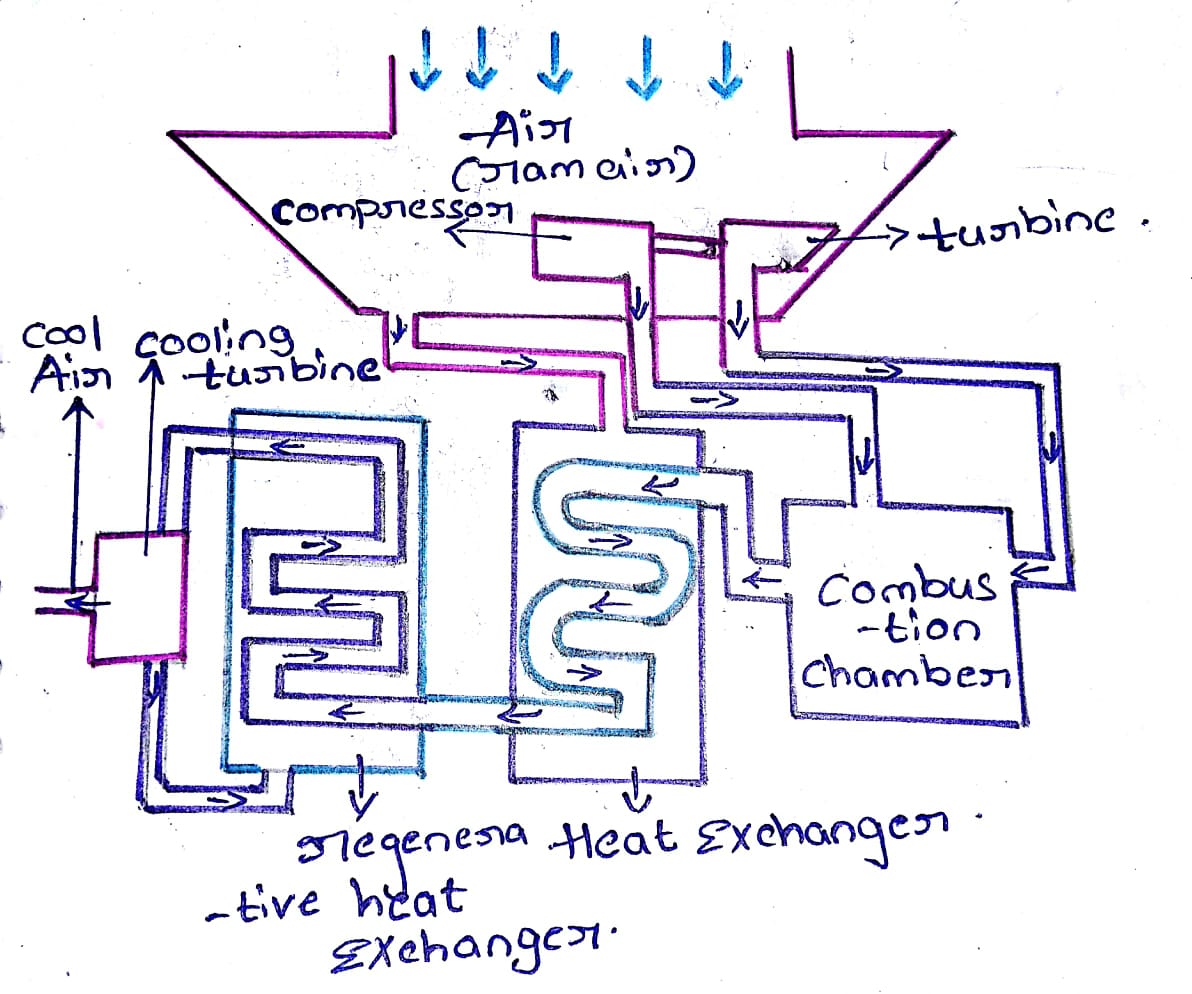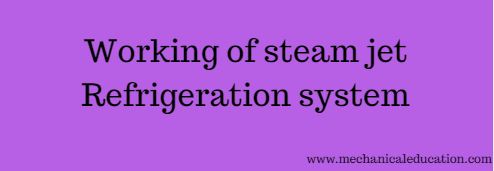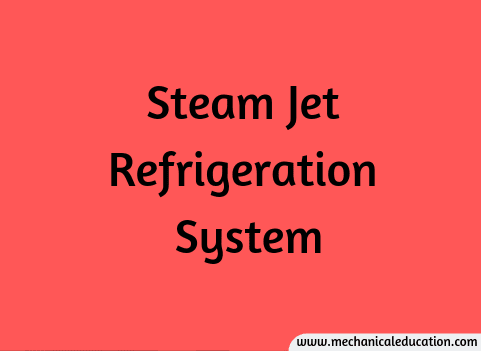What is Multi-Stage Compression?
Multi-stage compression is a process in which gas is compressed in multiple stages to achieve higher overall compression ratios and improve the efficiency of the compression system. This approach is commonly used in various industrial applications, particularly when compressing gases to high pressures.
Here are key points regarding multi-stage compression:
- Purpose of Multi-Stage Compression:
- The primary purpose of using multi-stage compression is to overcome limitations associated with a single-stage compression, such as high discharge temperatures, increased volumetric inefficiencies, and excessive power requirements.
- Compression Ratio:
- Multi-stage compression allows for a higher overall compression ratio while avoiding the drawbacks of extremely high compression ratios in a single stage. Each stage contributes to a fraction of the total compression ratio.
- Intercooling:
- One of the key features of multi-stage compression is the use of intercooling between stages. Intercoolers are heat exchangers that cool the compressed gas between stages, reducing its temperature before entering the next compression stage. This helps mitigate the negative effects of adiabatic heating.
- Adiabatic Efficiency:
- Multi-stage compression improves adiabatic efficiency by managing the temperature rise of the gas during each compression stage. Cooler gas entering subsequent stages results in less work required for compression.
- Energy Efficiency:
- Multi-stage compression systems are often more energy-efficient than single-stage systems, especially when compressing gases to high pressures. The reduction in power consumption is achieved by minimizing the work required in each compression stage.
- Applications:
- Multi-stage compression is commonly used in industries such as petrochemical, chemical processing, gas transmission, and refrigeration. It is applied in compressors used for air separation units, gas pipelines, and various chemical processes.
- Types of Compressors:
- Multi-stage compression can be implemented using different types of compressors, including reciprocating, rotary screw, and centrifugal compressors. The selection of the compressor type depends on factors such as the required pressure ratio, capacity, and efficiency.
- Number of Stages:
- The number of compression stages depends on the desired discharge pressure and the specific requirements of the application. High-pressure applications may require more stages.
- Compressor Efficiency:
- Multi-stage compression allows for improved overall compressor efficiency by optimizing each stage for specific pressure conditions. This results in better utilization of the compressor’s capacity and reduced energy consumption.
- Temperature Control:
- Intercooling between stages helps control the temperature of the gas, preventing it from reaching excessively high temperatures that could be detrimental to the compressor and downstream processes.
In summary, multi-stage compression is a practical solution for efficiently compressing gases to high pressures while managing temperature rise and improving overall compressor performance. The use of intercooling between stages is a key factor in achieving these benefits.
Types of Multi-Stage Compression
Multi-stage compression can be implemented using different types of compressors, and the choice of compressor type depends on factors such as the required pressure ratio, capacity, and efficiency. Here are common types of compressors used in multi-stage compression systems:
- Reciprocating Compressors:
- Reciprocating compressors are often used in multi-stage compression for moderate to high-pressure applications. They can be arranged in tandem or series to achieve the desired pressure ratio. Intercooling is typically applied between stages to improve efficiency.
- Rotary Screw Compressors:
- Rotary screw compressors are suitable for multi-stage compression, particularly in the medium to high-pressure range. These compressors feature two helical rotors that compress the gas. Multi-stage configurations can be employed with intercooling between stages.
- Centrifugal Compressors:
- Centrifugal compressors are commonly used in multi-stage compression for high-capacity, high-pressure applications. Each stage of a centrifugal compressor typically consists of an impeller and a diffuser. Intercooling is applied to control temperature rise.
- Axial Compressors:
- Axial compressors are utilized in multi-stage compression for applications requiring very high pressure ratios. They are often found in aircraft engines and certain industrial processes. Axial compressors use rows of rotating and stationary blades to compress the gas.
- Diaphragm Compressors:
- Diaphragm compressors, also known as membrane compressors, use flexible diaphragms to compress the gas. These compressors are suitable for applications that require oil-free and leak-tight compression. Diaphragm compressors can be configured in multi-stage setups.
- Liquid Ring Compressors:
- Liquid ring compressors are used in applications where the compression of wet gases or vapors is required. They can be employed in multi-stage compression systems, particularly in processes involving vacuum or low-pressure compression.
- Combination of Compressor Types:
- In some cases, a combination of different compressor types may be used in a multi-stage compression system. This approach allows engineers to optimize each stage for specific pressure conditions and achieve the desired overall performance.
The choice of compressor type for multi-stage compression depends on various factors, including the specific requirements of the application, the nature of the gas being compressed, efficiency considerations, and the desired pressure ratio. Each compressor type has its advantages and limitations, and the selection is made based on a thorough analysis of the operational parameters and system requirements. Additionally, intercooling between stages is a common practice to enhance efficiency and control temperature rise in multi-stage compression systems.
Advantages of Multi-Stage Compression
Multi-stage compression offers several advantages in comparison to single-stage compression, particularly when higher pressure ratios are required or when optimizing the efficiency of the compression process. Here are some key advantages of multi-stage compression:
- Increased Overall Efficiency:
- Multi-stage compression allows for the optimization of each compression stage to operate within a more efficient range. This leads to improved overall efficiency compared to a single-stage compressor, especially when compressing gases to high pressures.
- Reduced Energy Consumption:
- Multi-stage compression systems are often more energy-efficient than single-stage systems, particularly in applications where high compression ratios are needed. By distributing the compression work over multiple stages, each stage can be optimized for better efficiency, resulting in lower energy consumption.
- Lower Discharge Temperature:
- Intercooling effectively reduces the discharge temperature of the compressed gas. Lower discharge temperatures help protect downstream equipment, such as piping and valves, from the potential negative effects of high temperatures.
- Better Volumetric Efficiency:
- Multi-stage compression improves volumetric efficiency by managing the gas filling process more effectively during each stage. This leads to a more thorough filling of the cylinder during the suction stroke, reducing losses and improving overall performance.
- Flexibility in Pressure Ratios:
- Multi-stage compression systems provide the flexibility to achieve a wide range of pressure ratios. Different compressor stages can be designed to handle specific pressure ranges, allowing for customization based on the requirements of the application.
- Suitability for High-Pressure Applications:
- Multi-stage compression is well-suited for applications that require high discharge pressures. It is commonly used in industries such as petrochemical processing, gas transmission, and air separation units, where high-pressure gases are essential.
- Enhanced Reliability:
- Distributing the compression work over multiple stages can enhance the reliability of the compressor. If one stage fails or requires maintenance, the remaining stages can continue to operate, reducing the risk of a complete system shutdown.
- Reduced Wear and Tear:
- By dividing the compression work among multiple stages, each stage handles a smaller pressure ratio, resulting in reduced wear and tear on individual components. This can contribute to longer equipment life and lower maintenance costs.
- Adaptability to Specific Gas Properties:
- Multi-stage compression systems can be designed to accommodate the specific properties of the gas being compressed. This adaptability is crucial in applications where different gases require tailored compression processes.
Overall, the advantages of multi-stage compression make it a preferred choice in many industrial applications, particularly when efficiency, temperature control, and high-pressure capabilities are critical considerations.
Disadvantages of Multi-Stage Compression
While multi-stage compression offers numerous advantages, it also comes with certain disadvantages and challenges. Here are some of the drawbacks associated with multi-stage compression:
- Complexity and Cost:
- Designing and manufacturing multi-stage compression systems can be more complex and expensive compared to single-stage systems. The need for intercoolers, additional equipment, and precision engineering contributes to higher costs.
- Space Requirements:
- Multi-stage compressors may require more space due to the inclusion of intercoolers and additional components. This can be a limitation in applications where space is constrained or expensive.
- Maintenance Challenges:
- Multi-stage compressors have more components, including intercoolers and associated valves, which can increase maintenance requirements. Maintenance becomes more critical, and issues in one stage may affect the entire system.
- Potential for Leakage:
- Intercoolers and additional valves in a multi-stage system introduce additional points where gas leakage can occur. Proper sealing and maintenance are essential to minimize leakage.
- Energy Consumption During Intercooling:
- While intercooling helps control temperature rise, it requires additional energy input for cooling. The power consumed by intercoolers contributes to the overall energy consumption of the system.
- Reduced Adaptability to Variable Load Conditions:
- Multi-stage compressors may be less adaptable to variable load conditions compared to certain types of single-stage compressors. Sudden changes in load may require additional control mechanisms to maintain optimal performance.
- Limited Efficiency Improvement in Some Cases:
- In certain pressure ratio ranges, the efficiency gains achieved by adding more stages may diminish. The benefits of multi-stage compression may not be as pronounced in applications where the pressure ratio is within the optimal range for single-stage compressors.
- Complex Control Systems:
- Multi-stage compression systems often require sophisticated control systems to manage intercooling, valve operation, and other parameters. The complexity of control systems can pose challenges in terms of setup, maintenance, and troubleshooting.
- Potential for Pressure Pulsations:
- Multi-stage compression systems can experience pressure pulsations between stages, leading to potential vibration issues. Proper design and control measures are necessary to minimize the impact of pulsations on equipment and piping.
- Limited Adaptability to Certain Gases:
- Some gases may exhibit behaviors that make multi-stage compression less suitable. For example, gases with high molecular weights or those prone to polymerization may require special considerations in a multi-stage system.
Despite these disadvantages, multi-stage compression remains a widely used and effective approach, especially in applications where high pressures, efficiency, and temperature control are crucial. Engineers carefully evaluate the specific requirements of each application to determine whether the benefits of multi-stage compression outweigh the associated challenges.
Multi-Stage Compression Working principle
The working principle of multi-stage compression involves dividing the compression process into multiple stages, with each stage contributing to an incremental increase in pressure. The key elements of multi-stage compression include intercooling between stages and the use of different compressors or compression mechanisms in each stage. Here is an overview of the working principle:
- Initial Suction Stage:
- The process begins with the initial suction stage, where the gas to be compressed is drawn into the first stage of the compressor. This stage operates at relatively low pressures.
- Compression in the First Stage:
- In the first compression stage, the gas is compressed to an intermediate pressure level. The compression is achieved by a compressor, which could be a reciprocating compressor, rotary screw compressor, centrifugal compressor, or another type depending on the application.
- Intercooling:
- After the first compression stage, the compressed gas is directed to an intercooler. The intercooler is a heat exchanger that reduces the temperature of the gas before it enters the next compression stage. Intercooling helps control the temperature rise associated with adiabatic compression, preventing excessive temperatures that could harm the compressor and downstream components.
- Subsequent Compression Stages:
- The intercooled gas then enters the second compression stage, where it undergoes further compression to a higher pressure level. Additional intercooling may be applied between subsequent stages to manage temperature rise effectively.
- Repeat for Additional Stages:
- The process of compression followed by intercooling is repeated through several stages, gradually increasing the pressure of the gas. The number of stages depends on the desired overall pressure ratio and the specific requirements of the application.
- Final Compression Stage:
- In the final compression stage, the gas reaches the desired discharge pressure. The last intercooler may be employed to cool the gas before it is delivered to the downstream system.
- Discharge of Compressed Gas:
- The compressed gas is then discharged from the final compression stage and is ready for use in various industrial processes, such as air separation, gas transmission, or refrigeration.
The working principle of multi-stage compression offers several advantages. Intercooling between stages helps control temperature, reducing the risk of overheating and improving overall efficiency. The use of multiple stages allows for higher overall pressure ratios, making multi-stage compression suitable for applications that require gases to be compressed to high pressures.
The specific type of compressor used in each stage, the design of intercoolers, and the overall configuration depend on the characteristics of the gas being compressed, the desired pressure levels, and the efficiency requirements of the system. Engineers carefully design and optimize multi-stage compression systems based on the specific needs of each application.
Frequently Asked Questions – FAQ’s
In which industries is multi-stage compression commonly employed?
Multi-stage compression is commonly employed in industries such as petrochemical processing, gas transmission, air separation, refrigeration, and other applications where gases need to be compressed to high pressures efficiently.
Can multi-stage compression systems handle varying load conditions?
Yes, multi-stage compression systems can be designed with capacity control mechanisms to adapt to varying load conditions. These mechanisms include suction throttling, cylinder unloading, or variable speed drives.
How does intercooling contribute to energy efficiency in multi-stage compression?
Intercooling reduces the temperature of the compressed gas, lowering the work required for subsequent compression stages. This contributes to energy efficiency by minimizing the impact of adiabatic heating.
How does multi-stage compression differ from single-stage compression?
A: In multi-stage compression, the compression process is divided into several stages, each operating at a progressively higher pressure. This approach allows for more efficient compression to high pressures compared to a single-stage compressor.
What are the advantages of using multi-stage compression with intercooler?
Advantages include better temperature control, increased efficiency, suitability for high pressure ratios, reduced energy consumption, and improved overall performance in applications requiring high-pressure gases.
How is the number of compression stages determined in a multi-stage system?
The number of compression stages is determined based on the desired overall pressure ratio and the specific requirements of the application. Higher pressure ratios generally require more stages.
What types of compressors are commonly used in multi-stage compression systems?
Reciprocating compressors, rotary screw compressors, centrifugal compressors, and axial compressors are commonly used in multi-stage compression, depending on the application and pressure requirements.
What challenges are associated with multi-stage compression?
Challenges include system complexity, higher initial costs, potential for gas leakage between stages, and the need for precision control systems. Maintenance requirements may also be more demanding.
What is the role of an intercooler in multi-stage compression?
An intercooler is a heat exchanger used between compression stages to cool the compressed gas. It helps control temperature rise, improves overall efficiency, and prevents excessive heat-related issues in subsequent stages.
What is multi-stage compression, and when is it used?
Multi-stage compression is a process where gas is compressed in multiple stages to achieve higher overall pressures. It is used when high pressure ratios are required in applications such as air separation, gas transmission, and industrial processes.



